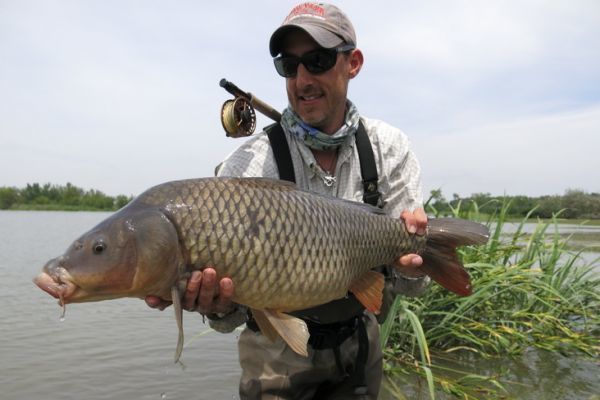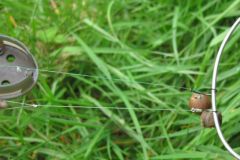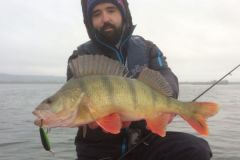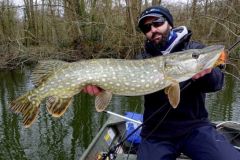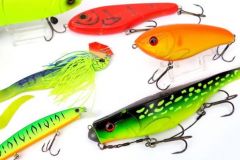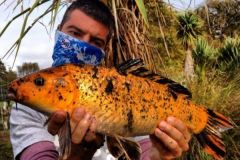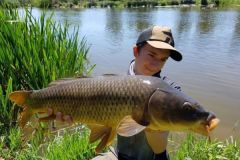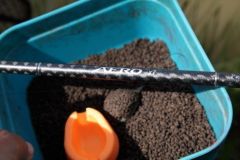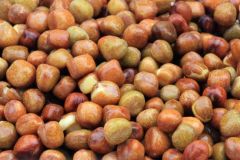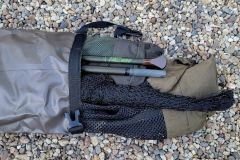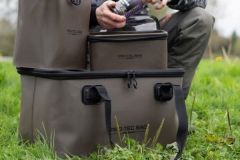On the fly, carp, whether common, mirror or leather, are a real challenge when searching for them on sight in little water, with imitations of the natural prey they feed on throughout the year.
This cyprinid is often very large and has a higher power-to-weight ratio than many fish species. Once hooked, the carp takes off like a whirlwind, unwinding silk and backing! It's a real sport fish for the fly fisher looking for a new challenge. More technical than it seems, this fish is often misjudged by fly fishers.
Where to fly fish for carp?
Carp have the ability to adapt to all aquatic environments, especially those low in oxygen. As a result, they can be found just about anywhere, even in the lower reaches of our second-category salmonid rivers.
They can be found in all water bodies, lakes, ponds and canals, although sometimes the water is murkier and does not allow sight fishing.
You'll need to do a bit of research to find these "spots" where you'll often see them marauding in fairly clear water, sometimes with their backs out of the water and tails in the air (tailing), where they come in very little water to feed, like bonefish or permit. They can be found in lakes and ponds, but it's often in rivers where the water is clear enough to spot the fish.
The fishing actions are very similar, and the challenge just as tough, as you have to find out what they're taking from the bottom and present it to them well. Refusals are quite frequent and their approach not so easy. The slightest noise, slap or imprecise landing and you're on the run!
Far from being fooled, you'll need to combine discretion and patience, as they can be extremely wary, especially in areas where there is a certain amount of fishing pressure.
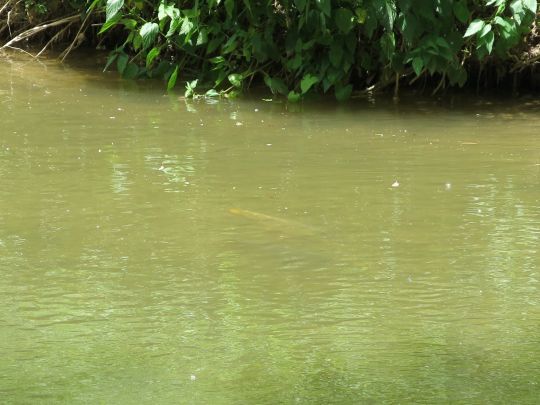
Fishing action
The best fishing situations are when carp are in shallow water and foraging on the bottom, ideally in small groups. In this case, a small cloud of silt rises from time to time.
In this case, offer them your imitation when they are eating and have their head down, and place your fly just in front of the fish. Wait, and if the fish doesn't decide, move your fly slightly on the bottom to attract its attention.
They can also be found in very little water in weed beds in search of aquatic larvae not necessarily on the bottom, sometimes between two waters. In this situation, you should ideally cast fairly close to them or intercept their trajectory if they are often on the move.
Another situation is when fish mop around close to the surface. These can be intercepted with light, gently sinking flies. Dragonfly larvae and lightly weighted flies with numerous small legs work very well in this situation.
Carp in full sunlight, motionless, are almost impregnable. They're napping. Don't waste your time.
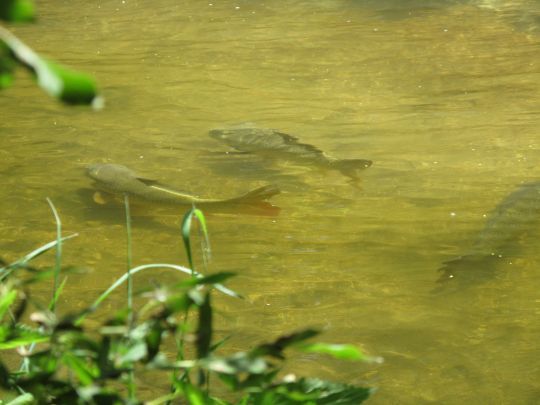
What equipment should I use?
It is recommended not to go below 9-foot rods for 8 silks, unless you are only looking for small carp and carpheads, and switch to 7 or even 6 silks.
To counter a powerful fish, it is sometimes necessary to use 9-gauge silk, especially when some anglers are stalking specimens approaching or exceeding 10 kg in rivers where they use the current.
You need a reel with enough backing (150 m minimum), especially for river fishing, and a progressive, powerful drag. Bonefish equipment is ideal.
We mainly use WF floating lines with a spindle that is neither too short nor too long (approx. 10 m) for fishing in shallow water. The clearer and shallower the water, the smoother and more accurate the lines should be.
A leader of one and a half rod lengths is well suited. It should not be too fast, as you want precision rather than speed, and a little softness is needed to land delicately close to the fish. A 28° to 35° fluorocarbon tip is ideal. Even more if you're fishing for very big carp, or if the area is wooded or strewn with pitfalls. It's important to adapt the set to the size of the fish and the obstacles present on the spot.
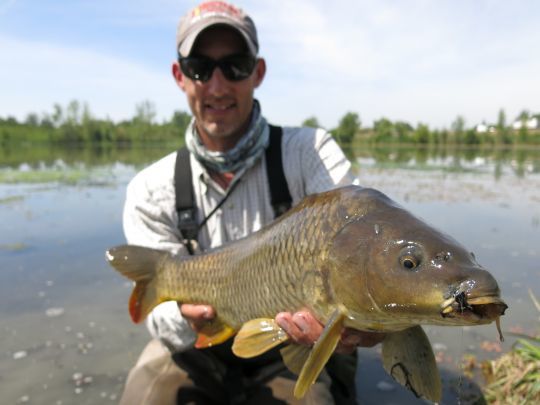
Selection of flies for sight fishing for carp
You need to be familiar with the diet of the carp you'll be tempting, as they are very opportunistic and can sometimes be selective.
We're not talking about imitations of bread or corn, which don't fit into their natural diet, even though these imitations can work. That's a whole different kettle of fish.

Depending on the season, carp can seek out all kinds of protein-rich prey. The best known are crayfish, leeches, worms, chironomid and dragonfly larvae, small fish, but also water snails and all kinds of aquatic larvae, including mud worms. They love them all. But they also feed on pollen, seeds and terrestrial insects. Observation is the key to choosing the right imitation for your behavior and the season.
The flies most often used are rabbit and/or marabou streamers in black, brown or olive, mounted with the hook point upwards to place it on the bottom in front of the fish.

 /
/ 